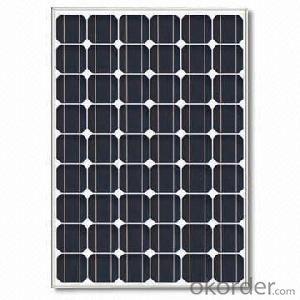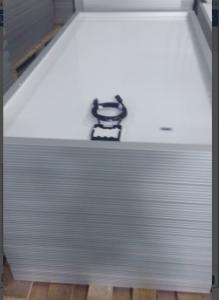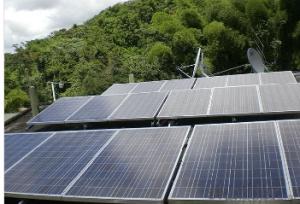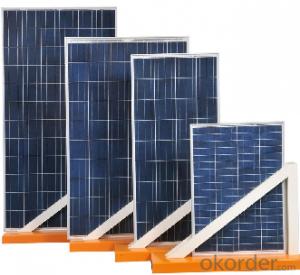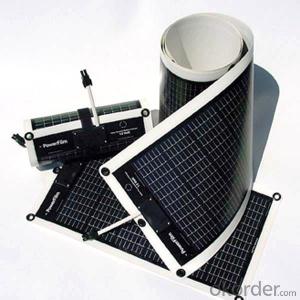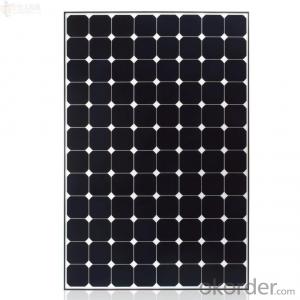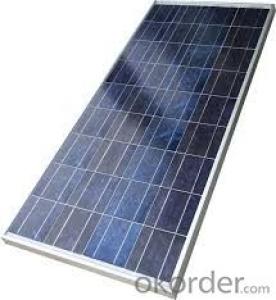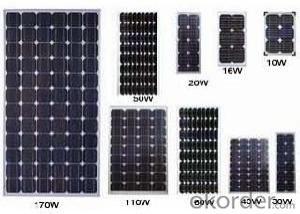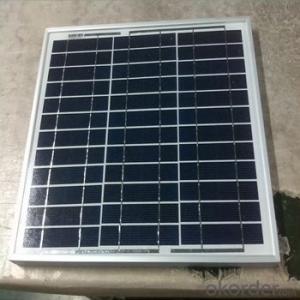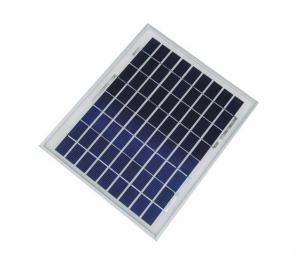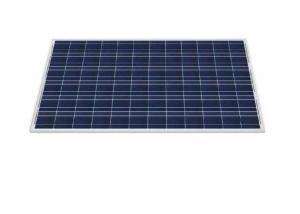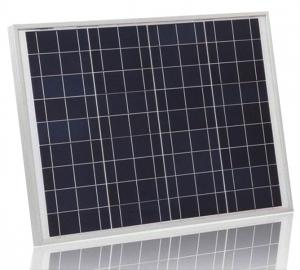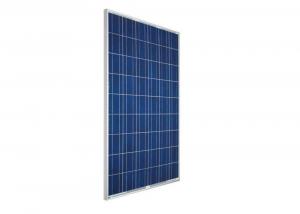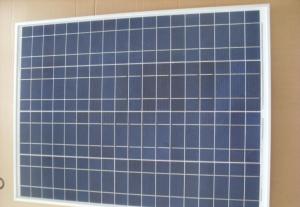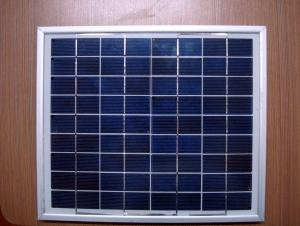20w Mini Monocrystalline Solar Panels 3.0 CNBM
- Loading Port:
- Qingdao
- Payment Terms:
- TT OR LC
- Min Order Qty:
- 10 set
- Supply Capability:
- 300000 set/month
OKorder Service Pledge
OKorder Financial Service
You Might Also Like
Mini Monocrystalline Solar Panel with 18W
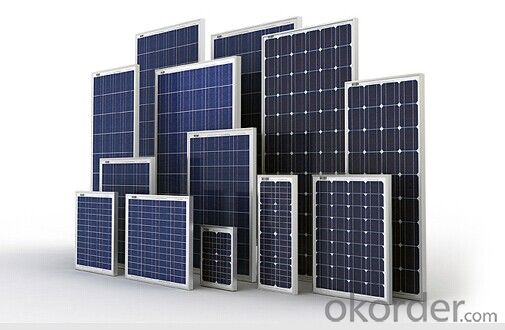
Monocrystalline Solar Modules
We offers a range of small, medium and large monocrystalline solar modules, designed for a range of requirements.
Specifications:
Tolerance | +/- 3% |
Cell | Monocrystalline silicon solar cells |
N0. of Cells | 72 (12 x 6) |
Dimension of Modules (mm) | 1581 x 809 x 40 |
Weight (kg) | 15.5 |
Limits:
Operating Temperature | -40~+85? |
Storage Temperature | -40~+85? |
Maximum System Voltage | 1000 VDC max. |
Hail Impact | Diameter of 28mm with impact speed of 86km/h |
Temperature and Coefficients:
NOCT | 48C+/-2? |
Voltage temperature coefficient (%/K) | -0.34 |
Current temperature coefficient (%/K) | 0.09 |
Power temperature coefficient (%/K) | -0.37 |
Characteristics:
Model: | SGM-160D | SGM-165D | SGM-170D |
Max-power voltage Vmp (V) | 34.5 | 35.4 | 35.8 |
Max-power current Imp (A) | 4.64 | 4.66 | 4.75 |
Open-circuit voltage Voc (V) | 41.75 | 43.6 | 43.32 |
Short-Circuit Current Isc (A) | 5.32 | 5.08 | 5.38 |
Max-power Pm(W) | 160 | 165 | 170 |
Model: | SGM-175D | SGM-180D | SGM-185D |
Max-power voltage Vmp (V) | 36.1 | 36.2 | 36.2 |
Max-power current Imp (A) | 4.85 | 4.97 | 5.11 |
Open-circuit voltage Voc (V) | 43.68 | 43.8 | 44.8 |
Short-Circuit Current Isc (A) | 5.49 | 5.48 | 5.51 |
Max-power Pm(W) | 175 | 180 | 185 |
STC: Irradiance 1000W/m2, Module temperature 25?, AM=1.5
Monocrystalline Solar Panels Specifications Range
Maximum Power (Pm) | Dimension | Weight | Operating Voltage (Vmp) | Operating Current (Imp) | Open Circuit Voltage (Voc) | Short Circuit Current (Isc) |
3W | 158x241x25mm | 0.5kg | 8.5V | 0.36A | 10.5V | 0.4A |
4W | 308x166x25mm | 0.77kg | 8.5V | 0.47A | 10.5V | 0.54A |
4W | 308.x166x25mm | 0.77kg | 16.8V | 0.24A | 21V | 0.27A |
5W | 296x215x25mm | 0.3kg | 16.8V | 0.48a | 21V | 0.54A |
10W | 286x406x25mm | 1.5kg | 16.8V | 0.59A | 21V | 0.66A |
12W | 286x406x25mm | 1.5kg | 16.8V | 0.71A | 21V | 0.8A |
14W | 286x541x25mm | 2kg | 16.8V | 0.83A | 21V | 0.96A |
16W | 286x541x25mm | 2kg | 17.2V | 0.93A | 21.5V | 0.99A |
18W | 296x541x25mm | 2.4kg | 18.8V | 1.07A | 21V | 1.2A |
20W | 296x641x25mm | 2.4kg | 17.2V | 1.15A | 21.5V | 1.24A |
24W | 541x451x25mm | 3.15kg | 16.8V | 1.14A | 21V | 1.56A |
26W | 541x451x25mm | 3.15kg | 17.2V | 1.51A | 21.5V | 1.63A |
30W | 296x966x25mm | 3.85kg | 16.8V | 1.78A | 21V | 2.03A |
36W | 541x641x35mm | 4.7kg | 16.8V | 2.14a | 21V | 2.4A |
40W | 541x641x35mm | 4.7kg | 17.2V | 2.33A | 21.5V | 2.5A |
55W | 1057x457x35mm | 6.6kg | 17.6V | 3.12A | 21.6V | 3.3A |
70W | 546x1196x35mm | 8.5kg | 16.8V | 4.15A | 21V | 4.7A |
75W | 546x1196x35mm | 8.5kg | 17.2V | 4.36A | 21.5V | 4.8A |
80W | 546x1196x35mm | 8.5kg | 17.6V | 4.55A | 21.6V | 4.9A |
110W | 1066x811x40mm | 11.8kg | 17.6V | 6.25A | 21.6V | 6.6A |
150W | 1066x811x40mm | 14kg | 34.4V | 4.36A | 43.2V | 4.7A |
- Q: they are pretty expensive. So does it save you money on electricity in the long run? How easy is it to connect solar panels to your house?
- I did. image voltaic capability components approximately seventy 5% of my electricity and decreased my electric powered invoice from approximately $a hundred and twenty/month to basically $35/month. I won a rebate from my state and a few tax deductions so my internet out-of-pocket value became approximately $6000. I stored a team of money via doing lots of the installation myself. As of right this moment my gadget has generated sixteen.5 megawatt hours of electricity simply by fact it became put in. the internet web page the place i offered the gadget is indexed decrease than and likewise an particularly stable mag on residential image voltaic capability is indexed decrease than. the two websites have very stable tutorials for human beings questioning approximately image voltaic. additionally based upon the place you reside wind capability could be an particularly stable option for you. in case you have a stable wind source it is going to be a greater value-effective thank you to generate capability.
- Q: I need to reduce the average monthly home electricity bill by powering some of the household appliances using solar panels. Can I use a 250 watt solar panel to power a medium sized upright fridge?
- How many watts does your fridge consume? Do you want it to work at night when the solar panels aren't doing anything? Probably not.
- Q: A homeowner is considering putting a horizontal solar panel on her roof to heat water for domestic use. An average increase of water temperature each day from 60oF to 20oF is wanted for 50 gallons. How large a panel would be needed on a clear winter day at 40o latitude if the overall efficiency is 50%?
- Solar okorder
- Q: Actually I want to convert my home electricity on Solar Panel to cut down electricity costI have 2 AC's, a refrigerator, 3 Television, 2 Computers, 4 Fans etc
- good okorder lots of good ideas there
- Q: so...do you think an online store dedicated to selling solar panels/systems will be a good business idea? Since green energy is the 'hottest' growing business area recently with usage growing about 30% per annum and investors putting all their money into solar energy, wind farms, biofuel, etc. I think when you sell solar systems online this will be the most appealing business model to the end customer...especially if you offer free installation on orders of say $000.
- It's that offering installation that is the problem. Do you have the ability to arrange contractors to install where ever the customer may be? The online store model works best on a drop ship model where once you've shipped the parcel, you're done. Online selling of solar panels would be basically to the DIY crowd and as you've said, most people don't have the skills nor the enthusiasm to install them. The current price per watt installed is about $0 a watt. $ per watt are the organic dye and film solar panels which are horrendously inefficient and require much more square footage and that $ per watt price is before installation. Currently solar depends a lot on government subsidies to be worthwhile. The various green energy technologies (both solar and wind) lack the economics to be anything other than greenwashing and often if you consider the total impact to the environment, they are often worse than fossil fuels and even if the environmental impact of their manufacture is neglected, it's hard to compete with fossil fuels where nature has done all the work of storing solar energy in a convenient hydrocarbon form. Of course, there's still money to be made off people's ignorance. You've already asked this question several times, apparently you're not satisfied with any answers that are counter to your hopes. Why don't you try it and see how far you'll get.
- Q: Im doing a science project and I need to know what gases or liquids a solar panel can make that is not friendly to the environment. Please name all the gases and liquids and explain how they damage the environment. It would be most likely that you will get best answer if you find all the bad things about solar energy and explain why they are bad and how they affect nature. that would be helpful to. Thank you
- Build okorder /
- Q: Can solar panels be installed on a high-rise building?
- Yes, solar panels can be installed on a high-rise building. In fact, high-rise buildings offer great potential for solar panel installations due to their large surface area and access to sunlight. However, it is important to consider factors like structural integrity, shading, and local regulations while designing and installing solar panels on high-rise buildings.
- Q: Can anyone give me a simple but informative explanation on how solar panels produce electricity/power? Thank you!
- The the very first thing to comprehend is that there's not anything difficult approximately a sun panel. It is not anything greater than a number of sun or PV cells on a board that's outfitted to essentially the most suitable side of your dwelling, mostly at the roof. There are courses available in the market that educate you methods to construct a sun panel and a windmill for simply $a hundred and fifty, and it’s very handy to make. Best of all, you'll be able to keep 70% or extra for your vigour invoice, including as much as enormous quantities of greenbacks each and every yr in financial savings. I reviewed each unfastened courses and paid courses and feature arise with our most sensible to Build your possess sun panels.
- Q: Can solar panels be installed on a tennis court or sports complex?
- Yes, solar panels can be installed on a tennis court or sports complex. These areas often have large open spaces with ample sunlight, making them ideal for solar panel installations. Additionally, integrating solar panels into sports facilities can help offset energy costs and promote sustainability.
Send your message to us
20w Mini Monocrystalline Solar Panels 3.0 CNBM
- Loading Port:
- Qingdao
- Payment Terms:
- TT OR LC
- Min Order Qty:
- 10 set
- Supply Capability:
- 300000 set/month
OKorder Service Pledge
OKorder Financial Service
Similar products
Hot products
Hot Searches
Related keywords
